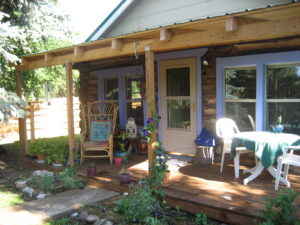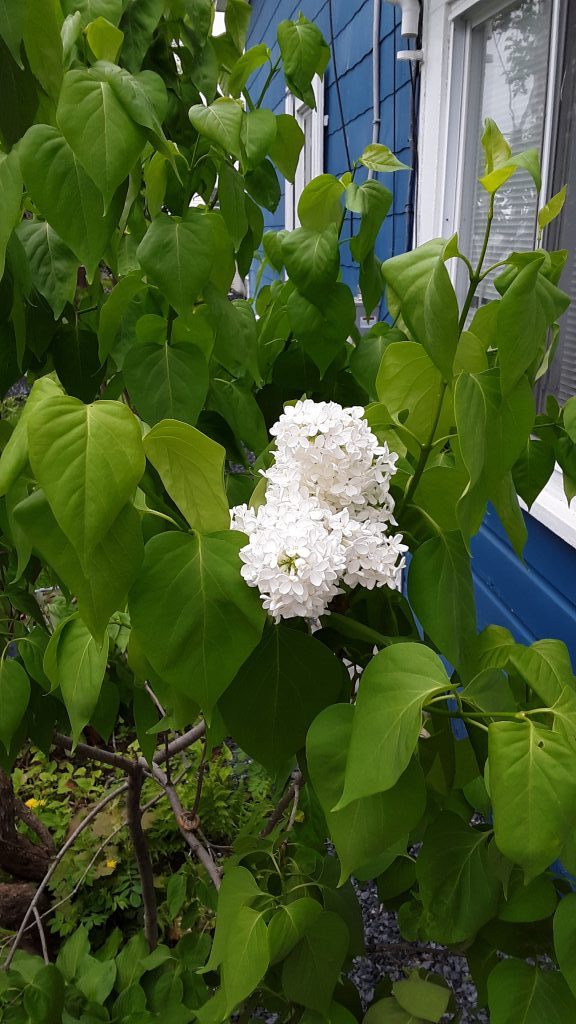by Jenny Rose | Jul 2, 2022 | Boundaries, Emotional Intelligence

By John Rose
I’ve written in detail about boundaries before. I’ve spent a lot of time on the concept because boundaries were a key piece of healthy functioning I never understood or had before I was 50, and that lack caused constant problems and stress in my life.
This week I came across some questions about budgeting from Seth Godin that really caught my eye and started me thinking about boundaries again. Budgeting is much in my mind as we transition into our new house, new systems, and a new routine for everything from cleaning out the cat boxes to paying the bills.
A budget, in essence, is a boundary. I never thought of it that way before, but a budget is a framework we agree to stay within as we manage the resource of money. Boundaries are not specific to money, and three of the questions Godin proposed can be applied widely:
- Are you able to understand yourself and your needs well enough to put boundaries around them? If you don’t, are you aware enough to know what you need to learn so you can?
- Are you willing to be on the hook for managing your life so you don’t exceed your resource (time, energy, money, etc.)?
- Can you embrace the imperfect nature of life and plans as you lean into boundaries and flex when appropriate?
Godin comes at this as a businessman, but the idea of budgeting (effectively managing financial resource) can be expanded to include any resource.
It strikes me budgeting is adulting. It requires a clear picture of expenditure and income, the ability to think ahead, the humility to acknowledge what we don’t know and need to learn. Whether we’re trying to shape a more effective life or remodel a bathroom, the process is the same. What’s not working? What are the needs? What are our options for change? What will the project cost in terms of resource over a period of time? What do we need in terms of resource for learning what we don’t know? Are we investing our resource wisely? What’s the starting point?
(This circles back around to showing our work, the subject of last week’s post.)
If we can’t dig into these questions, we can’t become a professional adult.
Budgeting also requires responsibility. Are we willing to be on the hook? Are we willing to make written commitments to ourselves and others? Are we willing to build in consequences for failing to meet our commitments, both to ourselves and others?
Lastly, perfectionism is not resilient. Plans, budgets, and boundaries are frameworks. They support us in meeting our goals and functioning effectively and appropriately. While we’re making plans and drawing up spreadsheets, however, life happens. Pandemics happen. Economic changes come and go. New technology comes onto the market. We often need to flex, consider new information, accommodate change, deal with delay and unexpected events.
None of those inevitabilities are excuses for abdicating from creating boundaries. If we care enough to take charge of our own lives or dive into a project, clarity and boundaries are essential, including a budget. It’s not good enough to fly by the seat of our pants, to say contractors won’t work within a budget anyway, or budgeting ruins the fun, or we’re unwilling to compromise in order to maintain our boundaries.
If we won’t take responsibility for our endeavors, why should contractors or anyone else? If we can’t manage boundaries around our lives and resource, why should anyone else respect our needs? If we won’t do the up-front planning and work and communicate it clearly to those we’re engaged with, how can we expect to meet our goals?

Photo by rawpixel.com on Unsplash
Moving into a new house invariably results in needing skilled tradesmen like plumbers and electricians. Such people are not easy to find, especially in a small city. Obviously, one wants someone who is skilled, but I’ve also been reminded how important it is to find someone who runs an effective business. Liking and appreciating people who do work for us and being pleased with the work done doesn’t balance out lack of written bids, receipts, invoices, contracts, etc. I can’t budget if I don’t have good information. I can’t plan payments. Flying by the seat of one’s pants is not good business. It leaves both customer and service provider in the dark. Fortunately, I keep good notes and records, but there’s a big difference between a handwritten (by me) list of dates and amounts paid (Labor? Equipment? Was this the outside faucet or the leaking sink? How much more will I owe? When is the final total due?) and a professional invoice indicating costs for equipment, labor, the work that was done, and payment status.
Budgeting and boundaries. What an odd couple. Recognizing budgeting as a boundary makes me determined to embrace it, no matter how uncomfortable it is. I know all too well the result of having poor boundaries.
by Jenny Rose | Jun 26, 2022 | Connection & Community, Emotional Intelligence
This tidbit landed in my Inbox this week. At first read, I simply agreed with it. As I’ve thought about it, though, I keep unpacking layers.
I’m sitting outside in the sun at our new house writing the old-fashioned way with a pen and paper on my knee, which is crusted with dirt. The knee, I mean, not the pen and paper! It’s too bright for my laptop out here. Inside, our plumber and his assistant are deconstructing our upstairs bathroom. Fortunately, we still have a dumpster. We are pleased to have our plumbing issues addressed: slow drains, old water damage, leaking pipes, and an unpleasant whiff of sewer now and then. We will be even more pleased to have a working shower.

Photo by Angelina Litvin on Unsplash
And it all costs money. A lot of money.
With no work as a distraction on this day off, I spent the morning in the garden, where I was thoroughly happy and busy. That took care of the morning. I got dirty (knees) and bug bitten. We have no water at the moment, so I’m going to stay dirty until the plumbers leave for the day, although, come to think of it, I don’t know the water will be turned back on when they leave. Hmm.
Anyway.
Near noon I went inside for shade and a cold drink, but the sounds of banging, sawing, and the shop vac, along with a steady stream of construction debris and old bathroom fittings being carried down the stairs and out the door on the way to the dumpster fueled my anxiety, so I turned to the comfort of writing, as I so often do. I started by catching up on my email, where inspiration frequently lurks.
It was then I read Godin’s brief thoughts about fear and footnotes. He suggests when we feel nervous and afraid about the “information” we’re writing or speaking about, we don’t show our sources, references, and work.
It made me think about my own fear about scarcity today. If I showed my work about that, about the fear I’ll run out of money and have to spend the rest of my life under a bridge, what would it look like?
Have I ever lived under a bridge?
No.
Have I ever been in serious want?
No.
Have I ever been homeless or truly hungry?
No.
Do I have a job I love and for which I’m paid?
Yes.
In essence, I have no work to show because my fear of scarcity is nothing but an old ghost, an ancient traumatic wound, irrational and mostly in my head.

Photo by Mar Newhall on Unsplash
Interesting. Does lack of research and background information indicate a measure of fear in our discourse, a measure of uncertainty, a degree of irrationality, even?
Perhaps.
It’s a fact that I like my information (facts) served up with links, references, and footnotes. Content presented as information (facts) without such foundations is suspect in my eyes, and I do further research. Far too many people in cyberspace call their opinions, pathologies, disorders, fetishes, and lies facts.
On the other hand, some information (facts) is so widely accepted, taught, and promulgated footnotes are hardly necessary. An example of this is diet. Much of our (broken) healthcare system is built on the foundation of “facts” about what constitutes a healthy and appropriate diet.
But what if these “facts” arise from corrupted data? What if the real truth is less profitable for those in power and thus has been buried? For decades?
Collecting data and testing hypotheses requires funding. Doing it well requires a lot of funding. Corporations and other entities with deep pockets may have a vested interest in the outcome of studies. It’s not impossible to imagine unpalatable findings (by which I mean findings which threaten profit) are buried or deleted. It’s also not hard to imagine studies designed to explore data contradicting the (profitable) status quo can find neither funding nor support in the most powerful scientific schools and journals.
An unhealthy population is enormously profitable for some people, and those people have a lot of power.
This sort of thing has, after all, been going on since the time of Galileo, the sixteenth century astronomer who was interviewed by the Inquisition, forced to recant his scientific findings, and spent the end of his life under house arrest.
The thing is, he was a scientific genius, and he was right.
But the Catholic Church, very powerful during that period of history, felt threatened by his conclusions.
In other words, they were afraid. So they shut him up. Fear = silencing.
But that doesn’t change the fact that he was right.

Photo by Brenda Godinez on Unsplash
Tens of thousands of articles are available online about the health benefits of a plant-based diet. The better written, more thorough ones contain resources and links to various studies and data. However, one can also find studies and data by well-qualified scientists and doctors (mostly in other countries) indicating the reverse: a plant-based diet may cause a myriad of health problems.
Critical thinking, the ability to assess a problem or question, research, look at data, ask questions, and analyze findings, is an equal opportunity playing field unless we have no access to information (like the Internet) or are unable to read and write. What this means to me is we all have a right to question information, research for ourselves, and look for a variety of sources and references. Critical thinking in the modern age means we must be able to separate a fact from an opinion, information (facts) from lies.
That’s a big problem. I’m quite confident a plant-based diet caused me years of health problems and pain and the biochemical results (demonstrable data) my current carnivore diet provides to my doctor are not dangerous or problematic. My healthcare provider disagrees. Vehemently. I want to talk about my research, resources, and links. I want to ask questions. I want resources my provider might have access to which I haven’t found or don’t know about. I believe I have some solid data to back up my questions and concerns. I also know I am frequently wrong, and I’m as susceptible as anyone else to the glamour of bullshit wrapped up in science.
My healthcare provider refuses to discuss it.
So there we are. I’m not afraid to be wrong, but I am afraid to be in pain. My healthcare provider is part of a broken system. How much power does she have, really, to deal with someone like me? How much time does she have? How much energy or even interest? It’s much easier to fill out a one-size-fits-all prescription for a plant-based diet or pharmaceuticals. Her job may be in jeopardy if she doesn’t feed me with the medical establishment’s current party line.
Meanwhile, in the eyes of some others, I’m murdering the planet, taking poor care of my health, and clearly believe in hate and violence toward animals. Any self-respecting member of PETA would set my house on fire.

Photo by Lukas Budimaier on Unsplash
None of that is true, from my perspective. None of it is even fact. I could provide several links and resources challenging those statements, many of them by scientists and including studies and data. But many, many, people would believe all those things and more about me based on my dietary choices, and they too could provide links, resources, and numerous studies and scientific conclusions supporting their point of view.
I agree with Godin. We should show our work. It won’t make everything magically clear because information from different sources frequently conflicts, and not all information sources are trustworthy, but showing our work helps us remember science is built on the shoulders of those who came before us (like Galileo), and honors the scientific process. Heck, it honors creative process. Godin’s original post is three lines. I just wrote more than 1,000 words because he poked at me and made me think, explore, question, wonder.
We are all connected, whether we like it or not. Showing our work makes us a little more human, a little more humane, a little more thoughtful, a little more careful. People who won’t show their work set off my radar. What are they hiding? Why don’t they have the courage of their convictions? Why are questions and investigations so threatening they must be silenced or stopped?
As for the inside of my own head, I need to show my work to myself, too. Anxiety thrives on the stories we tell ourselves without regard to whether the stories are true or have ever been true. We all need to be clear about the difference between our stories and opinions and information (facts). Stories and opinions have their place, but they’re not facts we can research, footnote, and independently verify. If we can’t show our work, perhaps we’re no longer in the realm of facts. If we won’t show our work, we lose credibility with people who think critically.
Updating a bathroom costs some money. We have some money. Those are the facts.

Photo by Anastasia Zhenina on Unsplash
by Jenny Rose | May 28, 2022 | A Flourishing Woman, The Journey
After years of hesitation, I have given up my landline and transitioned to my cell phone.
Many who read this will shake their heads in amazement at my tardiness, but I know others will understand.

Photo by Quino Al on Unsplash
When I think back about why I hesitated for so long, the simple root is I’ve always had a landline.
I’ve always had a landline, and it’s served me just fine. Why fix something that’s not broken? Why do I need some kind of new high-tech toy? (Okay, I know they’re not new new. But I grew up with rotary phones with curly cords, so in my personal context they’re pretty new.)
Another big reason was my internal protest against habits and technology which break connection. The TV is my most hated object under this heading, but when I watch people in the world bent over their screens, I feel angry, sad, and scared. Why can’t we make human, face-to-face, real connections anymore? Why can’t we actually watch our child while they’re in a swim lesson, or at a gymnastics meet, or at their horseback riding lesson? Why can’t we talk to each other without constantly being interrupted and distracted by our stupid phones? Will the world stop turning if we let the call go to voicemail, or let the text wait until we’re not engaged with the human being in front of us? Is it necessary to take the cell phone everywhere we go and never turn it off? I don’t want to be that available. Living a life, here!
Refusing to participate in cell phone usage was my resistance. They can, but I’ll never be like that! Right. And my children would never say or do that. (They did.) And I would never kill an animal for food. And I would never use a gun. Etc., etc. We all want to stand on high moral ground. Good luck with that.
It’s not as though refusing to buy and learn to use a cell phone made any difference at all to the perils of social media and screen addiction or fixed our social and cultural dynamics around connection and communication.

We just moved house, and I realized I was paying quite a bit for a landline I rarely used. My friends all use cell phones. My kids use cell phones. My workplace uses cell phones, including an app for a daily COVID check. I wondered why I was paying for a landline and a cell phone which I rarely used.
I did some research. I found landlines are on the way out, probably in the next 10 years. We were moving to a small city with good cell phone infrastructure and excellent access to WIFI and Internet.
I talked to my friends, who were supportive and kindly did not laugh at my hesitation, at least not in front of me. None of them have landlines.
As I cancelled and transitioned our utilities during the move, I let go of the landline.
Everyone knows the chaos of moving. I was uncomfortable with the cell phone at first. It was a learning curve. But boy, was it a great tool! My partner and I could stay in touch about timing, U-Haul rentals, where that important box was, scheduling the electrician, dumpster, and plumber, and who was going to have the key to the old house and the new house at any particular time. Quickly texting back and forth was a huge help. It didn’t take long to get comfortable with the device. I had to. It was all I had.
Somewhere along the learning curve I remembered the cell phone is my tool, not the other way around. If I don’t want to take it everywhere I go, I don’t have to. If I want to turn it off, I can. If I want to ignore a call or text, that’s my choice. It can’t disempower me unless I allow it to do so. I’m perfectly free to continue to prioritize my relationships and myself over answering or playing with my phone.
The whole thing has made me think about change in general. I’ll never be a person who immediately welcomes the latest gadget and technology. I’m a traditionalist, and I’m nearing 60. I want to live a simple life. I don’t want to buy or own a lot of objects. I’ll always enjoy a good book more than any kind of technology. I’ll always prefer a face-to-face interaction with my loved ones to a text or phone call.
On the other hand, new technology can be amazingly useful. I’ve discarded most of my music CDs at this point, because almost everything I want to listen to is on Spotify. Less stuff. Less storage. Less to move. All I need is – you guessed it! – my cell phone!
Not all change is bad. Not all change is good. I deliberated for years about getting an iPod. I never did, and then Apple discontinued them and I was glad I didn’t have one. I clung to a large computer with a tower, keyboard, and mouse (with a cord) for a long time. Then my brother talked me into getting a laptop, and it’s all I want to use now. It’s so much easier and more streamlined in every way.

Photo by freddie marriage on Unsplash
Change is always with us. The pandemic has been a notable catalyst for change in the last two or three years. Some of the changes it imposed and continues to impose were unwelcome, but we notice at work it forced us to create some more effective procedures we’ll probably retain even after the current restrictions are over.
Sometimes big problems require change, and often we’re resistant. However, on the other side of our discomfort and resistance we might find a better, safer, more equitable world. Those who don’t want a better, safer, more equitable world exploit our discomfort around change by making dramatic predictions and distorting and polarizing our choices, playing on our fear, playing on our entitlement. We’ve seen a lot of that with the pandemic, and now we’re seeing it again after the latest tragic school shooting in Texas. Red flag laws and sensible gun control do not mean everyone (including teachers) has a gun, and they don’t mean some malign alien superlizard overlord running the government will take away everyone’s guns, either. Get a grip, people!
Most change takes time. For a couple of years I had both a cell phone and a landline. Things happened, I reevaluated my phones, and I was ready to make a complete transition, so I did. Change is neither the enemy nor our One True Love. Maybe it’s just a new friend who could make our world a bit better if we allow it to. And who doesn’t want to see a better world?

Photo by Hian Oliveira on Unsplash
by Jenny Rose | May 21, 2022 | A Flourishing Woman, The Journey
As I unpack and gradually shape new routines after moving earlier in the month, I keep having a strange thought about this old colonial house we’ve bought.
This house is a grownup.
What does that mean? I ask myself.

New Home, May 2022
Traditionally, colonials were built with high ceilings, wood floors, tall windows, a single staircase to the second floor just inside the front door, and a simple layout with pleasingly proportioned rooms. Colonial style includes iron, pewter, brass and copper; handmade textured fabrics; the rich, muted colors of milk paints; and dark accents and trim. Brick and exposed wood beams were common. We have a tin ceiling in the living room and kitchen.
When I sit in the living room, as I am now on a cloudy morning, I’m struck by the clean, classic lines, the elegant but unfussy trim, the cool morning light coming in the windows. The house, in spite of its condition, has dignity. It’s stately. It knows what it is. It’s not fresh and perfect and new, but it endures. The bones are clear and strong beneath some unfortunate modern décor and updates, but the house has not allowed the surface disturbances to change its essential character.
As I’ve played with this perception that the house is a grownup, I’ve thought about other places I’ve lived in the last 15 years.

Maine Farmhouse and Barn
The old farmhouse we just moved out of had dementia. Aged, deteriorating, badly planned in terms of layout, inconvenient, disorganized, and unkempt, it rambled and wandered, sagged and groaned, leaked and creaked. It was unfocused. It didn’t make sense. There were bats in the belfry and screws loose all over the place. That house needs experienced 24/7 caregivers, which is what it has now in its new owners.
The log cabin I lived in before I came to Maine was an immature house, a teenaged house. It wasn’t nearly as old as this colonial, which is 100 years younger than the farmhouse, but it wasn’t new, either. It was the first home I ever made for just myself, though I was well into my 40s when I bought it and remodeled it. The woman I was then was still, in many ways, immature, and the choices I made in using the space reflected my immaturity.

It’s popularly said we become who we hang out with. Are we also influenced by the spaces we spend our time in? Do our spaces reflect us, or do we reflect our spaces, or both, a kind of reciprocal reflection? We’ve just barely moved into this house, but from the first night I was here I was aware of the dignity of the place, and the contrast to the feel of my cabin in Colorado and the farmhouse.
Some people go through life like a piece of heavy equipment, immediately imposing themselves on their environment without ever noticing the feel and character of the place first. But history matters to me. I like to get to know places and spaces without imposing myself on them immediately. These old houses have sheltered many lives over decades, and have seen lots of changes.
Possessions and habits I used and loved in both my Colorado cabin and the farmhouse are simply not at home here. I don’t need them. I don’t even want them. Somewhere in the 15 miles between the farmhouse and this new address, I outgrew them. Strange. In those empty spaces, the new house suggests different habits and fewer possessions. I thought I would gradually rebuild my old routines, but in fact I’m shaping new ones, and the house itself influences the shaping in many ways. It suggests ways to live within its walls that align with its inherent simplicity, grace and dignity.
Our relationships to our places are complicated. Some people never leave their home place. Others of us transplant into entirely new soil under new skies. The adjustment is uncomfortable, but we discover things about ourselves and our possessions. Packing every single item we own, physically moving it, and unpacking and finding a new place for it is an opportunity to reevaluate and update our priorities and values.
I’ve always been a late bloomer. I finally seem to have grown up, and as this house and I get to know one another we’re scraping old layers of debris, trash, beliefs and habits off one another and helping each other stand tall and proud and peaceful, experienced and wise adults in an uncertain world.
And an old white lilac is blooming by the porch door.

Lilac, sun porch, May 2022
by Jenny Rose | May 14, 2022 | A Flourishing Woman, The Journey
We have finally moved. It was a long time coming. This has been one of the most significant transitions of my life, and it was not easy.

Photo by Michal Balog on Unsplash
Regular readers know the ups and downs, so I won’t reiterate the journey. What’s important is I’ve come out on the other side, and I’m sitting typing this at my new desk in front of my new window with a new view. I’ve been cleaning, unpacking, and moving things around all morning, and I didn’t want to stop, but I made myself. It’s been ten days of nonstop work.
Reducing chaos and disorder is one of my favorite activities, but it’s exhausting. My partner and I are bruised, stiff, and sore. My hands are chapped and my fingernails broken. Yesterday afternoon I finally got our teeny tiny shower clean enough to use without gagging; I’ve been showering at the pool facility where I work.
On Monday I went back to my regular work schedule after taking a couple of days off, and I walked to work! Amazing. In fact, I walked to the lower parking lot where I always park and laughed at myself. I don’t need to go there anymore. I can just walk straight to the building door.
Our new place, an old colonial, is sadly dilapidated and was very dirty, so I moved in the day we closed last week and got to work. My whole area is floored with old “punkin” pine floors, which consist of pine planks aged to a warm brown-orange with wide cracks between the boards. The floor, probably original to the house, is terribly battered and stained. It could use a sanding and refurbishing, but we had no time for that and it will have to wait until sometime in the future.
The house is heated with baseboard hot water and the old radiators are bent, broken, filthy and rusted. I’ve spent hours and hours on my hands and knees with a long-handled flat head screwdriver cleaning out the cracks in the floor and pulling debris out from under the radiators.
I excavated needles, screws, nails, other miscellaneous hardware, children’s socks, hair elastics, bobby pins, hair clips, at least $5 dollars in coins (mostly pennies), broken glass, food crumbs, dry cat food, rubber bands, paper clips, all kinds of beads and plastic toys, dental picks, a kitchen knife, small toys, pencils, pens, crayons, markers, lip balm, lint, pet hair, people hair, costume jewelry, toothpicks, lollipop sticks, candy wrappers, pieces of plastic, pieces of paper, popcorn kernels, thumbtacks, and one green jellybean.
I swept and vacuumed, swept and vacuumed, swept and vacuumed, every time finding new layers of dirt and debris. Then I damp mopped with a couple of drops of dish soap several times. Finally, I used a special wood floor cleaner, applied with a damp mop.
The plumbing and wiring need to be updated. The yard is full of trash. None of the doors shut well and all the knobs are loose. Most of the exterior doors don’t lock. Many of the windows are painted shut. At least half the blinds are broken. More than half of the electrical outlets don’t work.
And yet. This is a wonderful old house with graceful proportions, high ceilings, some of them tin. The windows are tall and generous and the sun floods in from both east and west. We’re on a corner lot and I can hardly wait to explore the garden. A magnolia tree in front is in flower. Spring bulbs are blooming.
In spite of the house’s neglected and outdated state, the structure is sound. The roof doesn’t leak. The foundation is not cracked. I think our heating and cooling costs will decrease, even with skyrocketing prices. My partner and I each have a floor to live on, so we’re not in each other’s hair, which works better for us. We’re in a small city, so groceries, appointments, our car mechanic, the laundromat, and emergency services are all right here. Have I mentioned I can walk to work?
It’s a new chapter, and I’m shaping a new kind of life. As I unpack and sort through my belongings, some of which I haven’t seen or used since I moved to Maine seven years ago, I’m asking myself who I am now, who I want to become, and what I want to do with this part of my life. Objects and habits precious to me in the house we just sold no longer seem so meaningful. Everything is different.

I am different.
One of my goals in moving was to build for myself a simpler, more sustainable life to make room for what matters most to me. I’m all too aware how frequently the people and activities most meaningful to us are squeezed out by carelessness, time and energy destroying habits, being over busy, and having too much stuff.
What matters most to me are my relationships, including being owned by cats, my work, and my writing. I’ve prioritized creating an office space with ample room where I can work, dream, and research. My oak desk sits in front of a tall east-facing window, outside of which I will plant a lovely garden and hang a couple of bird feeders. I have my file cabinets, my laptop, and, most importantly, my books.
Developing a routine in a new place is difficult, and I’m compulsive about getting everything organized and put away, but it’s the weekend. In fact, it’s Saturday morning as I write this, and I’m going to publish today, no matter what. I have promised myself this. So I pulled myself away from the work of settling in to finish this post. It’s good to be writing again. I didn’t take the first hours of my day to do it, as I always did in our old house, but it is still morning, so I give myself points for that!
After two weeks of chaos and confusion, it’s good to be back to the page. Perhaps next week I’ll have more brain as well as a newly redeveloped writing practice. I’m sure I brought my brain. It’s probably carefully packed in a box somewhere …

















